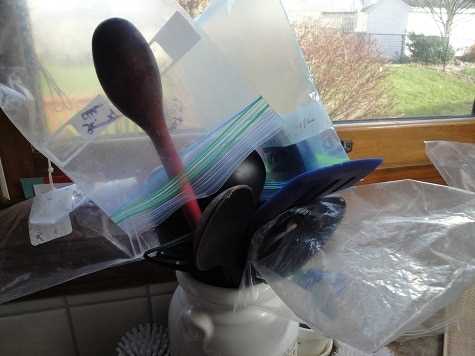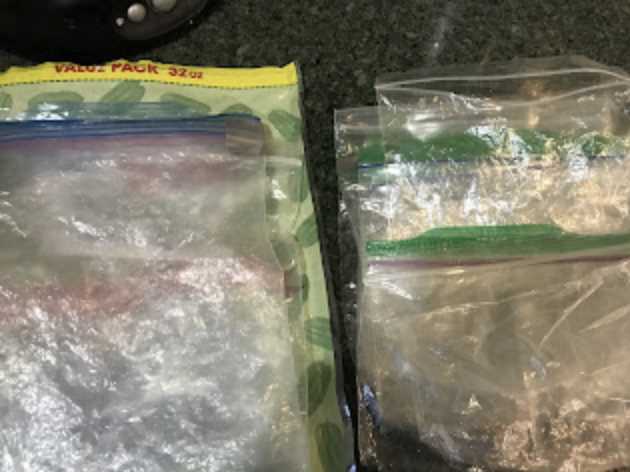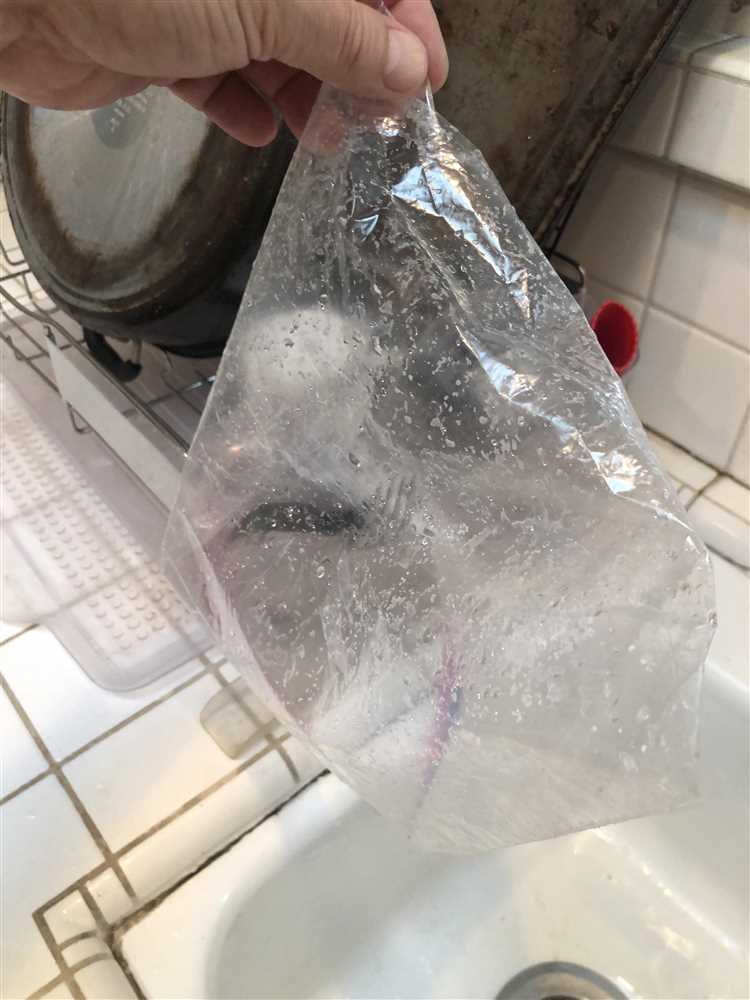
Ziploc bags have become a staple in many kitchens around the world for their convenient and versatile use. They are commonly used for storing food, snacks, and other items to keep them fresh and organized. While they are meant to be disposable, many people wonder if Ziploc bags can be safely washed and reused.
There are a few factors to consider when determining if Ziploc bags can be reused. Firstly, it is important to note that Ziploc bags are made from a type of plastic called low-density polyethylene (LDPE). This type of plastic is known for its durability and flexibility, which allows the bags to be sealed tightly and preserve the freshness of the contents.
While Ziploc bags are designed to be used once and thrown away, many people find ways to extend their lifespan by washing and reusing them. This can help reduce waste and save money in the long run. However, it is important to follow certain guidelines to ensure that the bags are safely cleaned and reused.
- Are Ziploc bags reusable safely?
- Cleaning and washing
- Inspecting for damage
- Understanding Ziploc bags
- How to clean Ziploc bags
- 1. Empty the bag and remove any debris
- 2. Rinse the bag
- 3. Use dish soap or vinegar
- 4. Rinse again
- 5. Air dry
- Benefits of reusing Ziploc bags
- Potential risks and precautions
- Tips for extending Ziploc bag lifespan
- Environmentally friendly alternatives
- 1. Reusable Silicone Bags
- 2. Beeswax Wraps
- Q&A
- Can Ziploc bags be washed in the dishwasher?
- How many times can a Ziploc bag be used before it needs to be thrown away?
- What is the best way to clean a used Ziploc bag?
- Is it safe to reuse Ziploc bags to store raw meat?
Are Ziploc bags reusable safely?
Ziploc bags are designed to be reusable, but it’s important to follow certain precautions to ensure that they can be used safely.
Cleaning and washing
After each use, it is recommended to wash Ziploc bags thoroughly with warm soapy water. Turn the bags inside out and wash both the inside and outside surfaces. Rinse the bags well to remove any soap residue. Alternatively, you can also clean them in the dishwasher if they are dishwasher-safe.
Inspecting for damage
Before reusing a Ziploc bag, inspect it carefully for any signs of damage, such as tears, holes, or weak areas. If a bag shows any signs of wear and tear, it is best to discard it and use a new bag to avoid any potential food contamination or leakage.
Important note: Reusing Ziploc bags may not be suitable for certain food items, especially those that leave strong odors or have a high fat content. In such cases, it is best to use disposable bags.
In conclusion, Ziploc bags can be safely reused if they are properly cleaned, inspected for damage, and used for appropriate food items. However, it is important to use discretion and common sense when reusing bags, and to discard any bags that show signs of damage or contamination.
Understanding Ziploc bags
Ziploc bags are a type of resealable bags that are commonly used for storing food, keeping it fresh, and preventing leaks. These bags are made from polyethylene plastic, which is durable, flexible, and resistant to moisture. They are designed to be reusable and can withstand repeated use.
Ziploc bags are a popular choice for storing and transporting food due to their convenient sealing mechanism. The bags have a zipper-like closure that allows you to easily open and close them, ensuring a tight seal that keeps food fresh and prevents leaks. Ziploc bags are also transparent, which makes it easy to see what is inside without having to open them.
When using Ziploc bags, it is important to note that they are not intended for long-term or heavy-duty use. While they are designed to be reusable, they can deteriorate over time and may become less effective at sealing. It is recommended to inspect the bags for any signs of wear and tear, such as holes or cracks, before reusing them.
When it comes to washing Ziploc bags, they can be safely hand washed or cleaned in the dishwasher. It is best to wash them with warm water and soap, ensuring that they are thoroughly rinsed and dried before reuse. However, it is important to avoid using hot water or harsh chemicals, as these can potentially weaken the plastic and affect the seal.
| Pros | Cons |
|---|---|
| Convenient and easy to use | Not suitable for long-term or heavy-duty use |
| Reusable and eco-friendly | Potential for deterioration and less effective seal over time |
| Transparent for easy visibility | Requires proper cleaning and maintenance for optimal reuse |
In conclusion, Ziploc bags are a practical option for storing food, thanks to their durable and flexible design. While they can be safely washed and reused, it is important to inspect them for any signs of wear and tear and clean them properly to ensure optimal performance.
How to clean Ziploc bags
Ziploc bags are designed for single-use purposes, but with proper cleaning and care, they can be reused multiple times. Cleaning Ziploc bags is a straightforward process that involves a few simple steps.
1. Empty the bag and remove any debris

Before cleaning a Ziploc bag, make sure to empty it of any contents. Dispose of any food or other items, and remove any debris that may be stuck to the inside of the bag.
2. Rinse the bag

Hold the Ziploc bag under warm running water and rinse both the inside and outside thoroughly. This will help remove any remaining residue or lingering odors.
3. Use dish soap or vinegar
To remove any grease or stubborn stains, fill the Ziploc bag with warm water and a few drops of dish soap. Close the bag and gently massage the soapy water around the inside. For tougher stains, you can substitute dish soap with vinegar, which has natural cleaning properties.
4. Rinse again
After scrubbing the inside of the bag, empty the soapy water and rinse it with warm water once again. Make sure to rinse thoroughly to remove all soap or vinegar residues.
5. Air dry
After rinsing, shake off any excess water from the bag and place it on a rack or hang it up to air dry. Make sure the bag is completely dry before storing it to prevent the growth of mold or bacteria.
Following these steps will help you clean and reuse your Ziploc bags effectively, saving both money and reducing waste. It is important to note that Ziploc bags can wear out over time with repeated use, so it is advisable to periodically check for any signs of damage or wear and replace them as needed.
Benefits of reusing Ziploc bags
Ziploc bags are not only convenient for storing and organizing items, but they can also be reused multiple times, providing several benefits:
- Eco-friendly: Reusing Ziploc bags reduces the amount of plastic waste that ends up in landfills. By washing and reusing them, you can help reduce your carbon footprint.
- Cost-effective: By reusing Ziploc bags, you can save money by not constantly needing to buy new ones. This is particularly beneficial for families or individuals on a tight budget.
- Convenience: Having a stash of clean, reusable Ziploc bags on hand can be incredibly convenient. Whether you need them for packing lunches, storing leftovers, or keeping small items organized during travel, reusing Ziploc bags saves you from constantly having to buy disposable ones.
- Preserving food freshness: Ziploc bags are designed to provide an airtight seal, which helps keep food fresh for longer. By reusing them, you can continue to take advantage of their ability to keep your food free from spoilage.
- Reducing cross-contamination: When reusing Ziploc bags, it’s important to wash them thoroughly to avoid cross-contamination. However, by dedicating certain bags to specific types of items (such as one for fruits and another for meat), you can help reduce the risk of cross-contamination in your kitchen.
Overall, reusing Ziploc bags offers numerous benefits, from reducing waste and saving money to promoting convenience and preserving food freshness. By incorporating this simple habit into your daily routine, you can make a positive impact on the environment while enjoying the many advantages of reusability.
Potential risks and precautions
While it is possible to wash and reuse Ziploc bags, there are some potential risks and precautions to keep in mind:
- Deterioration: Over time, the plastic used in Ziploc bags may start to deteriorate, especially if they are subjected to high heat or repeated use. This can lead to the bags becoming less effective at sealing and may increase the risk of leaks or contamination.
- Contamination: Even with proper cleaning, there is still a risk of residual food particles or bacteria remaining in reused Ziploc bags. This can potentially contaminate the food stored in the bags and lead to foodborne illnesses. It is important to thoroughly wash and inspect the bags before reuse.
- Weakening of the seal: The seal on Ziploc bags may weaken over time, particularly if they have been repeatedly washed and reused. This can lead to a higher risk of leaks, which may cause food to spoil or become exposed to air, resulting in freezer burn.
- Reduced effectiveness: Repeated washing and use can gradually reduce the effectiveness of Ziploc bags in terms of their ability to keep out moisture and air. This can affect the quality and freshness of the stored food.
To minimize these risks, it is important to follow proper precautions when washing and reusing Ziploc bags:
- Thoroughly clean: Rinse the bags with warm water and dish soap, paying special attention to any areas with visible food residue. Use a bottle brush or sponge to scrub the bags if necessary.
- Inspect for damage: Check the bags for any signs of deterioration, such as cracks, holes, or weakened seals. Discard any bags that show signs of damage.
- Avoid high heat: Washing Ziploc bags with hot water or using them in high-temperature environments, such as microwaving or dishwasher, can accelerate the deterioration process. It is recommended to use lukewarm water for cleaning.
- Avoid reuse of bags with raw meat or fish: Due to the potential for bacterial contamination, it is best to dispose of Ziploc bags that have been used to store raw meat or fish. This will help minimize the risk of cross-contamination and foodborne illnesses.
- Replace regularly: To ensure the best quality and safety, it is advisable to replace Ziploc bags periodically, especially if they show any signs of wear or damage.
By following these precautions, you can reduce the potential risks associated with washing and reusing Ziploc bags and help maintain the safety and integrity of your stored food.
Tips for extending Ziploc bag lifespan
While Ziploc bags are designed for single-use, there are some steps you can take to extend their lifespan and minimize waste:
- Wash with mild soap and lukewarm water: After each use, wash the bags with a gentle soap and lukewarm water. This will help remove any residue or odors left behind from the previous contents.
- Air dry thoroughly: Once washed, make sure to air dry the bags completely before reuse. Moisture left inside the bags can lead to mold and mildew growth.
- Avoid using high heat: When drying the bags, avoid using high heat methods such as microwaving or putting them in the dishwasher. High heat can damage the bags and reduce their lifespan.
- Store them properly: To prevent damage, store the washed and dried Ziploc bags in a cool, dry place. Avoid folding or crumpling them, as this can create weak spots or creases that may cause leaks.
- Inspect for damages: Before reusing a Ziploc bag, inspect it for any damages or wear. Look for any holes, tears, or weakened areas that may compromise its integrity. If you notice any damage, it’s best to discard the bag.
- Reuse for non-food items: If you are concerned about reusing Ziploc bags for food storage, consider using them for non-food items instead. They can be great for organizing small objects, storing craft supplies, or keeping toiletries organized during travel.
Remember, while these tips can help extend the lifespan of Ziploc bags, it is important to prioritize food safety and hygiene. If in doubt, it is always best to use a new bag.
Environmentally friendly alternatives
While reusing Ziploc bags can help reduce waste, there are also a variety of environmentally friendly alternatives to consider. These options can be a great addition to your kitchen and reduce your use of single-use plastic bags.
1. Reusable Silicone Bags
One alternative to Ziploc bags is reusable silicone bags. These bags are made from food-grade silicone and are dishwasher safe. They are a durable option and can be used for storing both liquids and solids. Some reusable silicone bags even come with a zippered closure, making them a convenient and eco-friendly option for food storage.
2. Beeswax Wraps
Another eco-friendly alternative is beeswax wraps. These wraps are made from cotton fabric coated with beeswax, jojoba oil, and tree resin. They can be used to wrap sandwiches, fruits, and vegetables, as well as cover bowls and containers. Beeswax wraps are reusable, washable, and can last for up to a year with proper care.
It’s important to note that beeswax wraps cannot be used for storing raw meat or hot foods.
Other alternatives that you can consider include glass containers with lids, stainless steel containers, and cloth bags. These alternatives not only reduce waste but also provide a more sustainable option for food storage.
Remember, small changes can make a big impact, so consider incorporating these environmentally friendly alternatives into your kitchen routine.
Q&A
Can Ziploc bags be washed in the dishwasher?
Yes, Ziploc bags can be safely washed in the dishwasher. However, it is recommended to place them in the top rack and use a mild detergent. Make sure to check the packaging and ensure that the bags are dishwasher-safe before washing them.
How many times can a Ziploc bag be used before it needs to be thrown away?
A Ziploc bag can be reused several times before it needs to be thrown away. The exact number of uses will depend on various factors, such as how it is cleaned and how heavily it is used. It’s important to inspect the bag for any signs of wear or damage before each use to ensure it is still safe to use.
What is the best way to clean a used Ziploc bag?
The best way to clean a used Ziploc bag is to wash it with warm soapy water. Gently scrub the inside and outside of the bag using a sponge or dishcloth. Rinse it thoroughly with clean water and allow it to air dry. Some people also use vinegar or bleach diluted with water for extra sanitization, but make sure to thoroughly rinse the bag afterwards.
Is it safe to reuse Ziploc bags to store raw meat?
It is generally not recommended to reuse Ziploc bags to store raw meat. Bacteria can easily contaminate the bag, and it can be difficult to completely sanitize it after it has come into contact with raw meat. It’s better to use new bags or dedicated containers for storing raw meat to minimize the risk of foodborne illnesses.